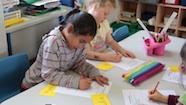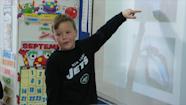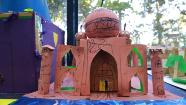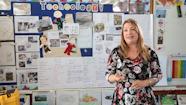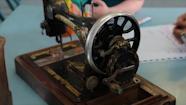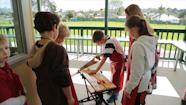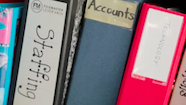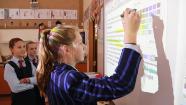New entrants explore what technology is with teacher Jill Harper.
New entrants identify the made world
Transcript
Jill Harper: I plan to teach what is technology because they are a fairly new, new entrant class and it’s really an introductory lesson. Well, always at the beginning of a lesson you try and focus the children on what they are learning in child-speak. So I try to use the word technology to get the message through to them and then try and recap at the end a little. That’s what the puppets were for.
Jill Harper: They’ve heard that we are learning about technology, and they don’t know anything about technology and they want to find out about technology, and they thought that Room 19 would be a good place to start. Technology helps to make what sort of world?
Students: The made world.
Jill Harper: The made world. Right, and why do they make things?
Student: Because they want it or they want to make it.
Jill Harper: They want it or they...?
Student: Need it.
Jill Harper: They need it.
Jill Harper: I was focussing on the characteristics of technology and the difference between the natural world and the made world. There’s a link to reading because it is a little non-fiction reader with an index.
Jill Harper: And it’s called Good Ideas for People. Look at this man. Where did he get the good idea? Where did he get the good idea?
Student: From the bird.
Jill Harper: From the bird. So what’s the man making, is he making a nest?
Student: A basket.
Jill Harper: And they’ve got wire that has spikes, the spikes are like little prickles.
Jill Harper: And there’s a link to science because it refers to the natural world and the man made world and makes a difference. The evidence of learning I was looking for was just making the links between the natural world and the made world as we walked through the book, and drawing their attention to the purposes and that for the made world things. And at the very end of the book there is a mapping chart where the children can match the pictures from the made world to the natural world. And that’s one way of doing it and then going back and just revisiting it just to build on their understandings and use it as a little lead off to the next step.
Jill Harper: Can you tell me, do they come from the natural world or the ...?
Students: Made world.
Jill Harper: Made world. And why are they, why were they made? Why did somebody decide to make them?
Student: Because they wanted to hug them.
Jill Harper: I want to talk more about purpose and technological outcomes, because they really, they’ve been introduced to those ideas but we need to do a little bit more work on them.
Related videos
Year 1–2 technologists design for a purpose (03:52)
Students in years 1 and 2 discuss with their teacher why technologists make things out of different materials.
Year 1–2 future technologists (02:06)
Kathy Chandler and her year 1–2 students discuss technological outcomes and what technologists do.
Cars are technological outcomes (03:53)
James Mawson explores cars as technological outcomes with his year 2 class.
Planning for a coherent programme in primary (02:11)
Science and technology teacher Shannon Maloney shares how she works collaboratively with teachers to integrate technology into their programmes....
Building technology inquiries in years 1–6 (02:47)
Shannon Maloney talks about building rich technology units within a programme of inquiry in years 1–6.
My role as a lead teacher technology at Green Bay Primary (02:48)
Diana Comp shares about providing resourcing, inspiration, and professional learning in her role as lead teacher technology.
Hooking primary students into technology (02:34)
Diana Comp shares some of her strategies for engaging primary students and growing understandings in technology.
Planning for technology at primary (03:59)
Jude Black and Diana Comp describe their approach to planning at Green Bay Primary.
A school-wide vision for technology teaching and spaces (03:53)
Jude Black of Green Bay Primary prompts us to consider how technology is incorporated into our school vision.
Growing knowledge beyond students' practice (02:27)
Claire Wood and a year 8 student talk about unpacking examples of technologists' practice to grow curriculum understandings.


